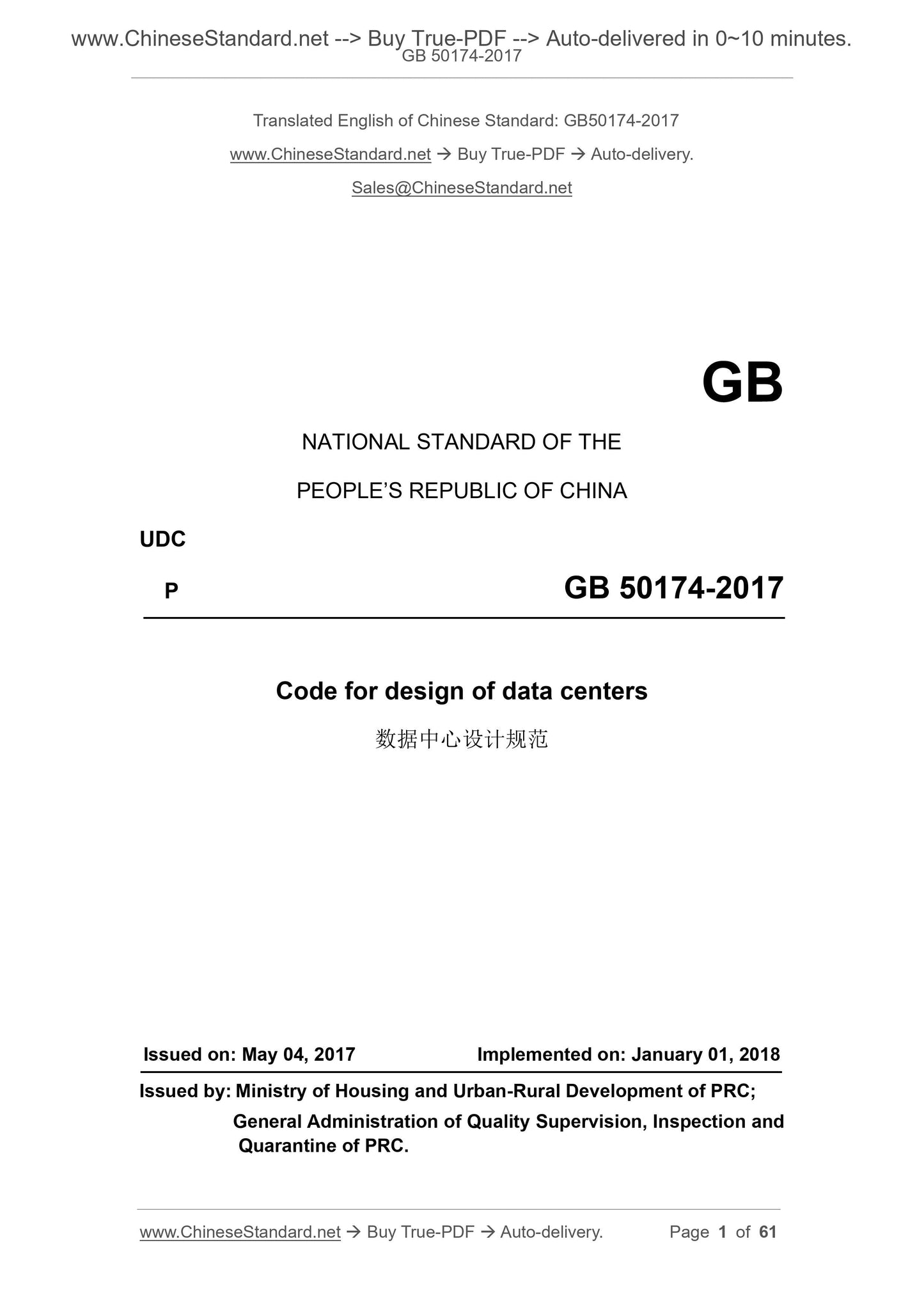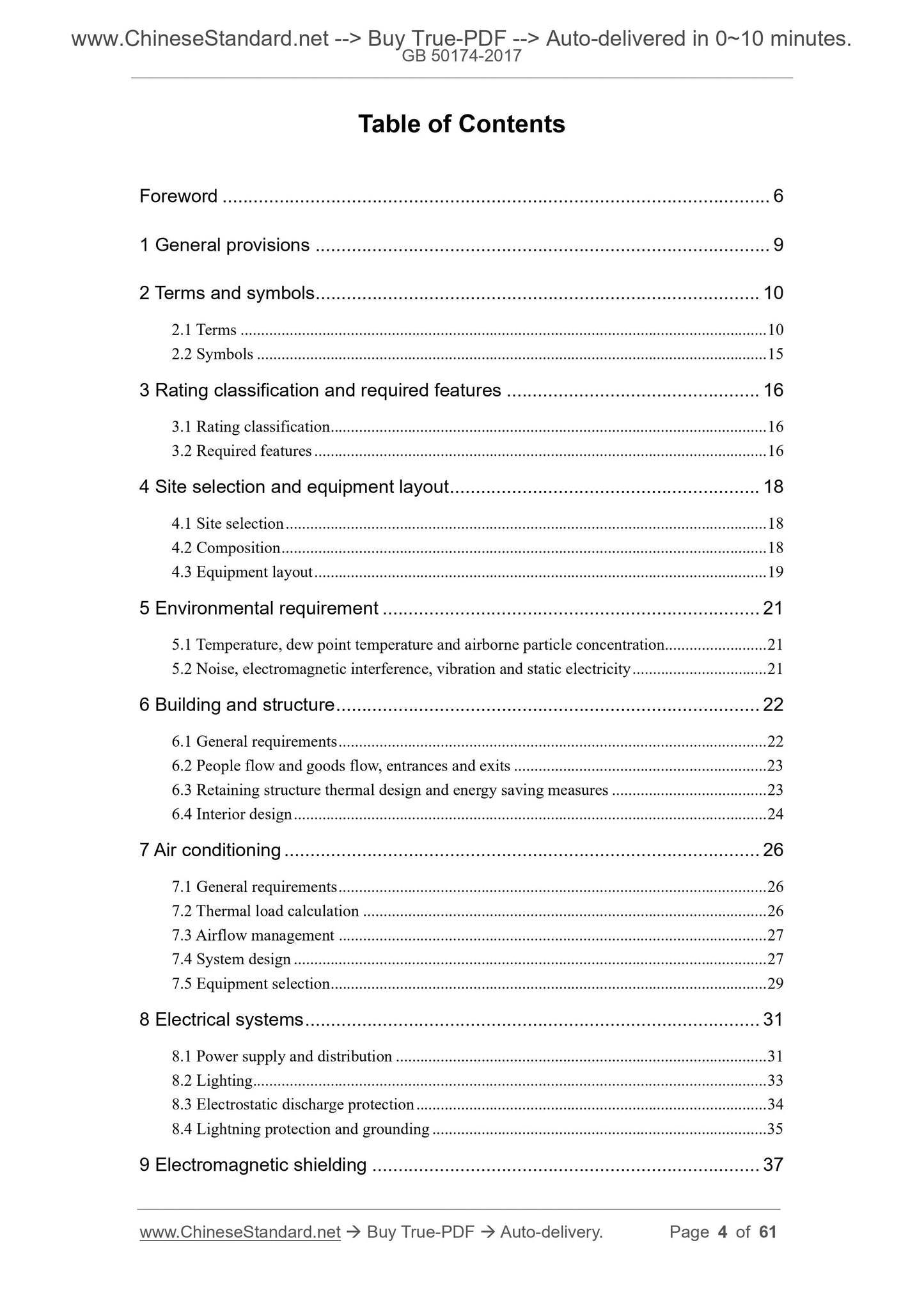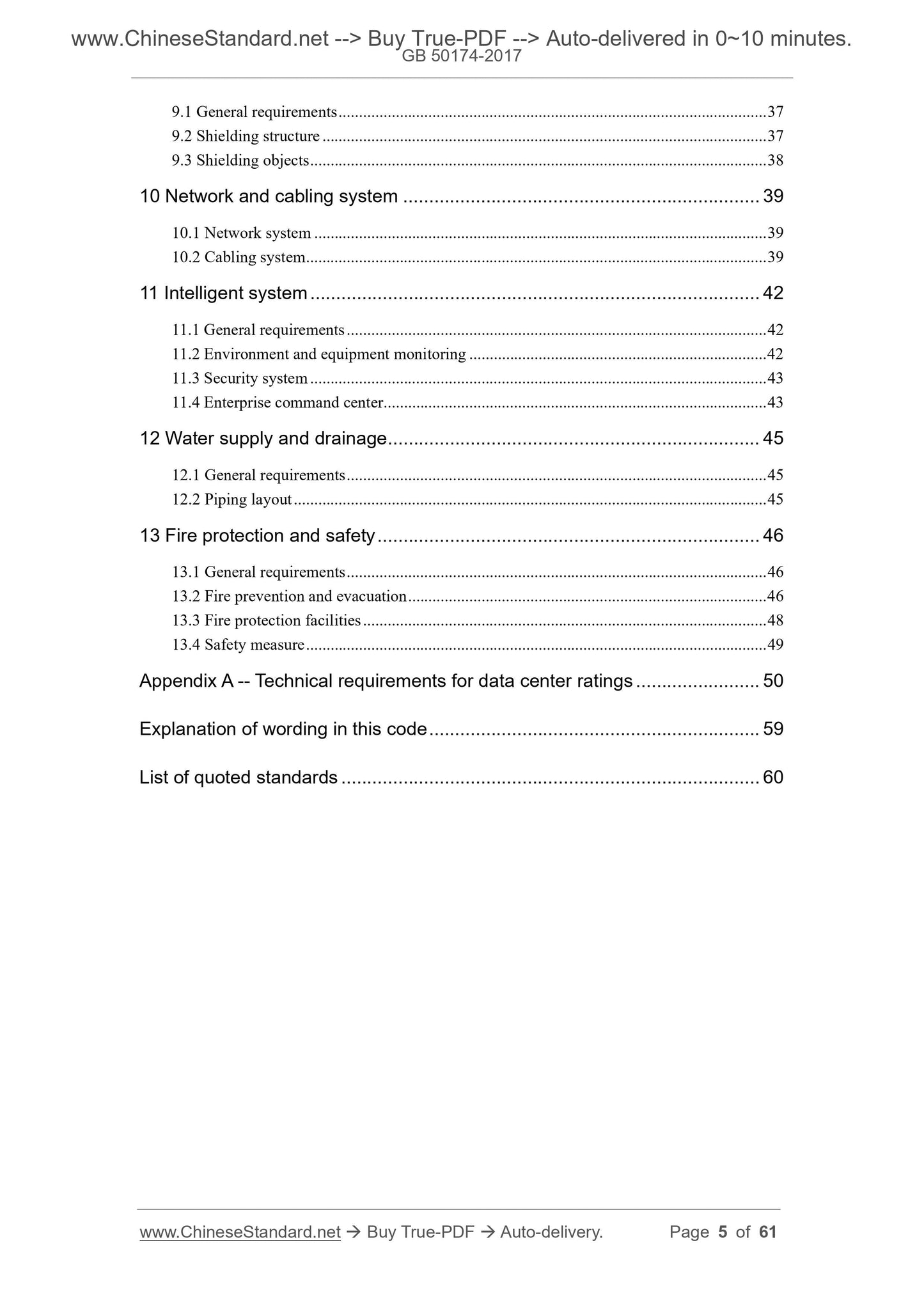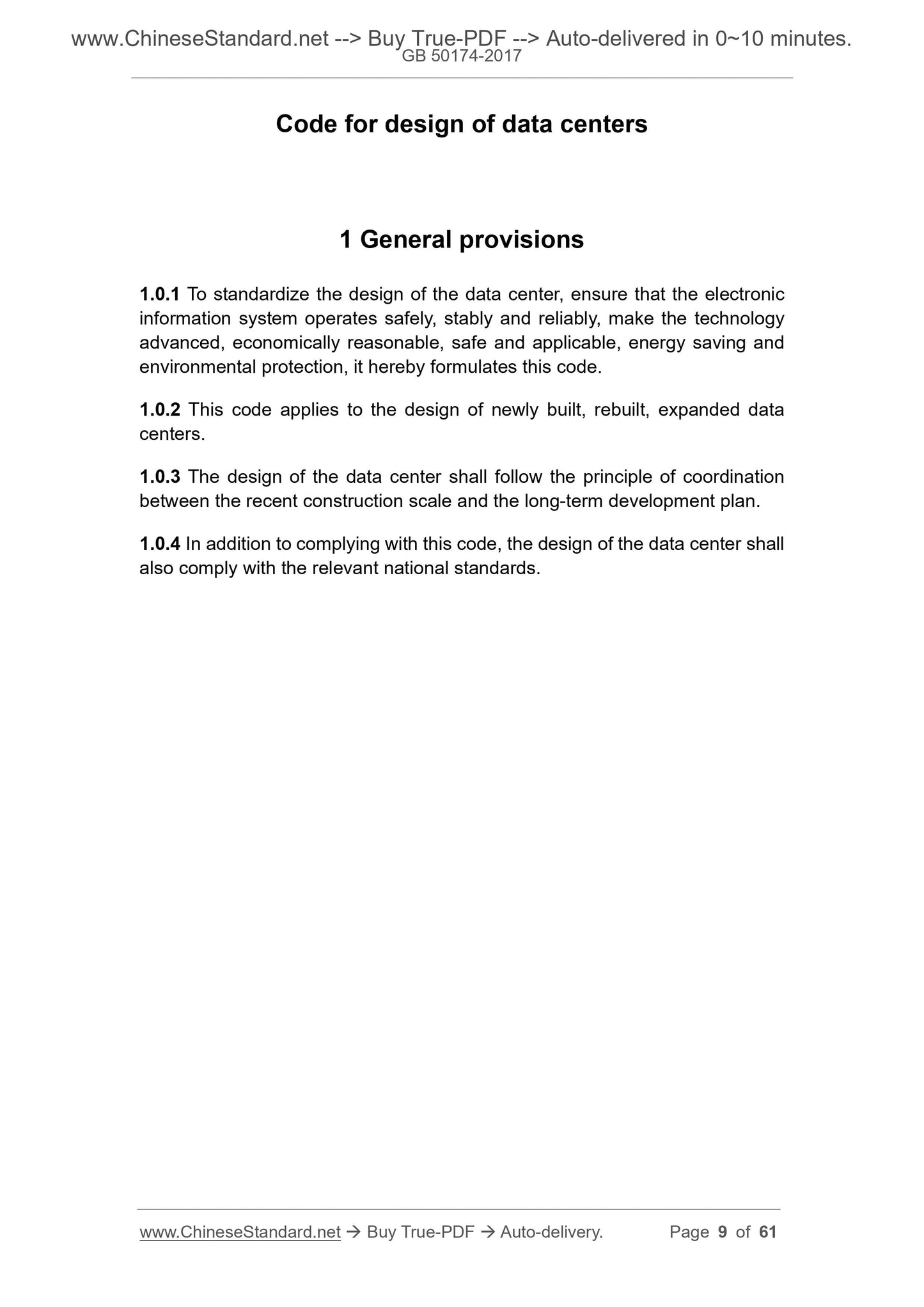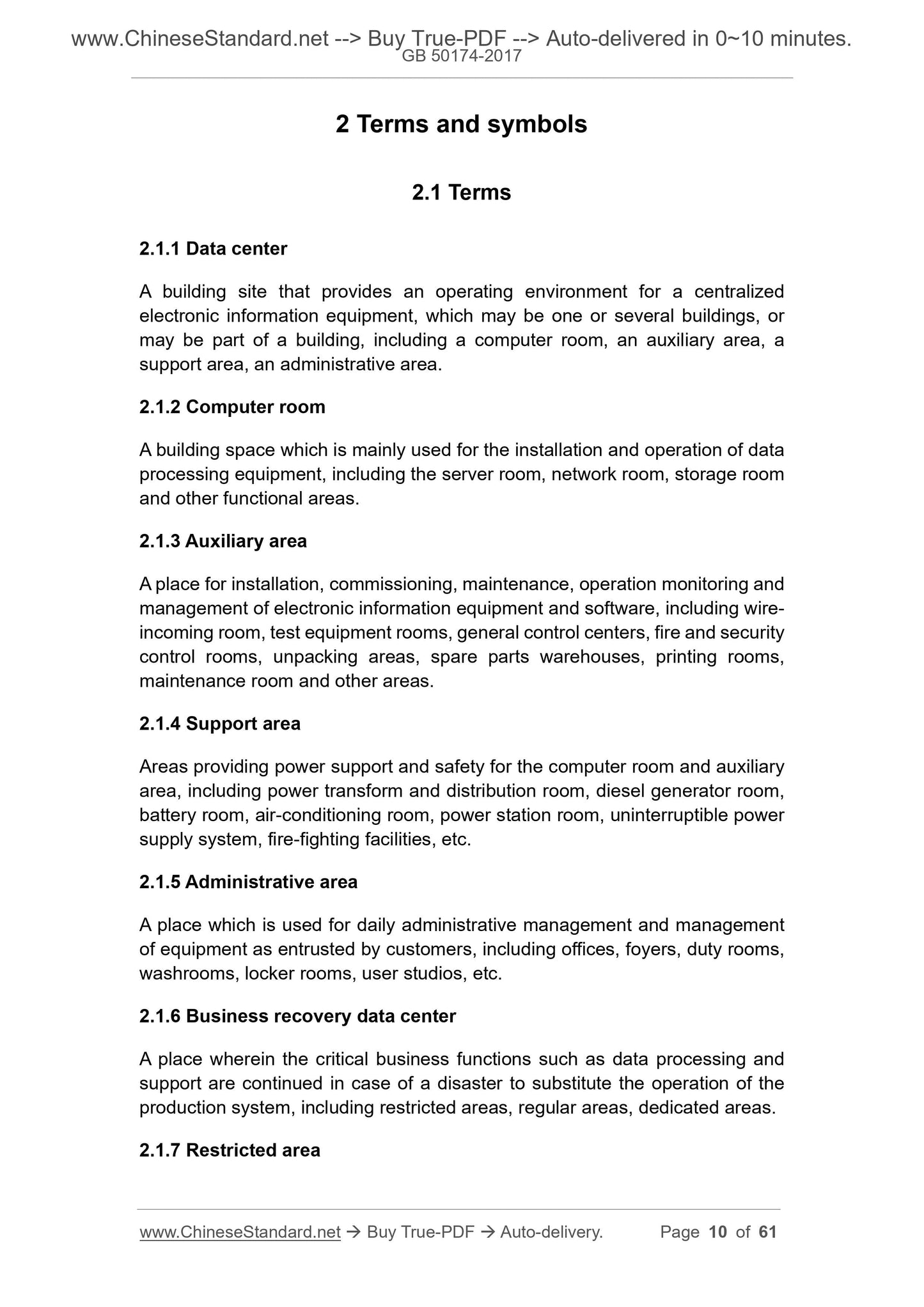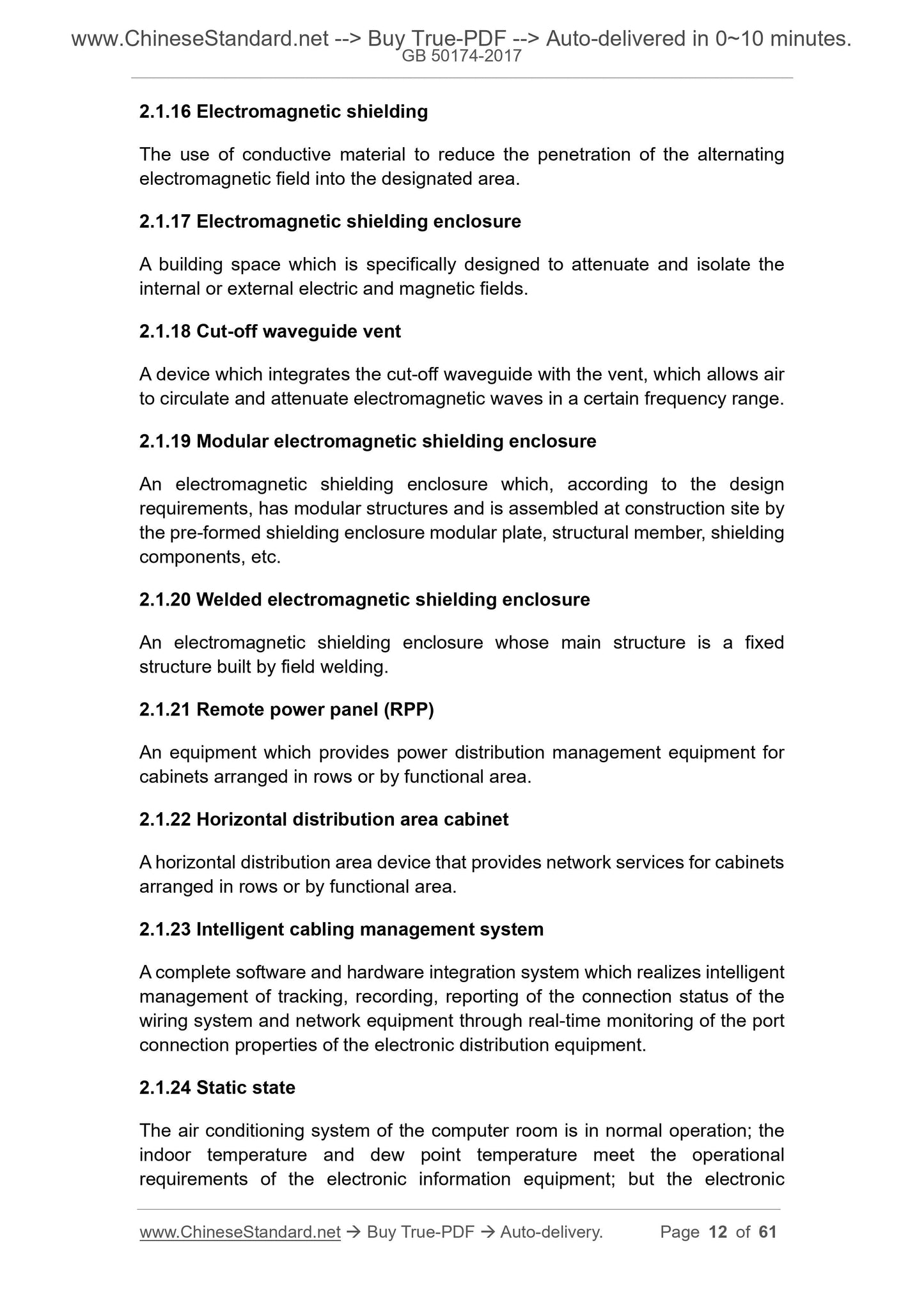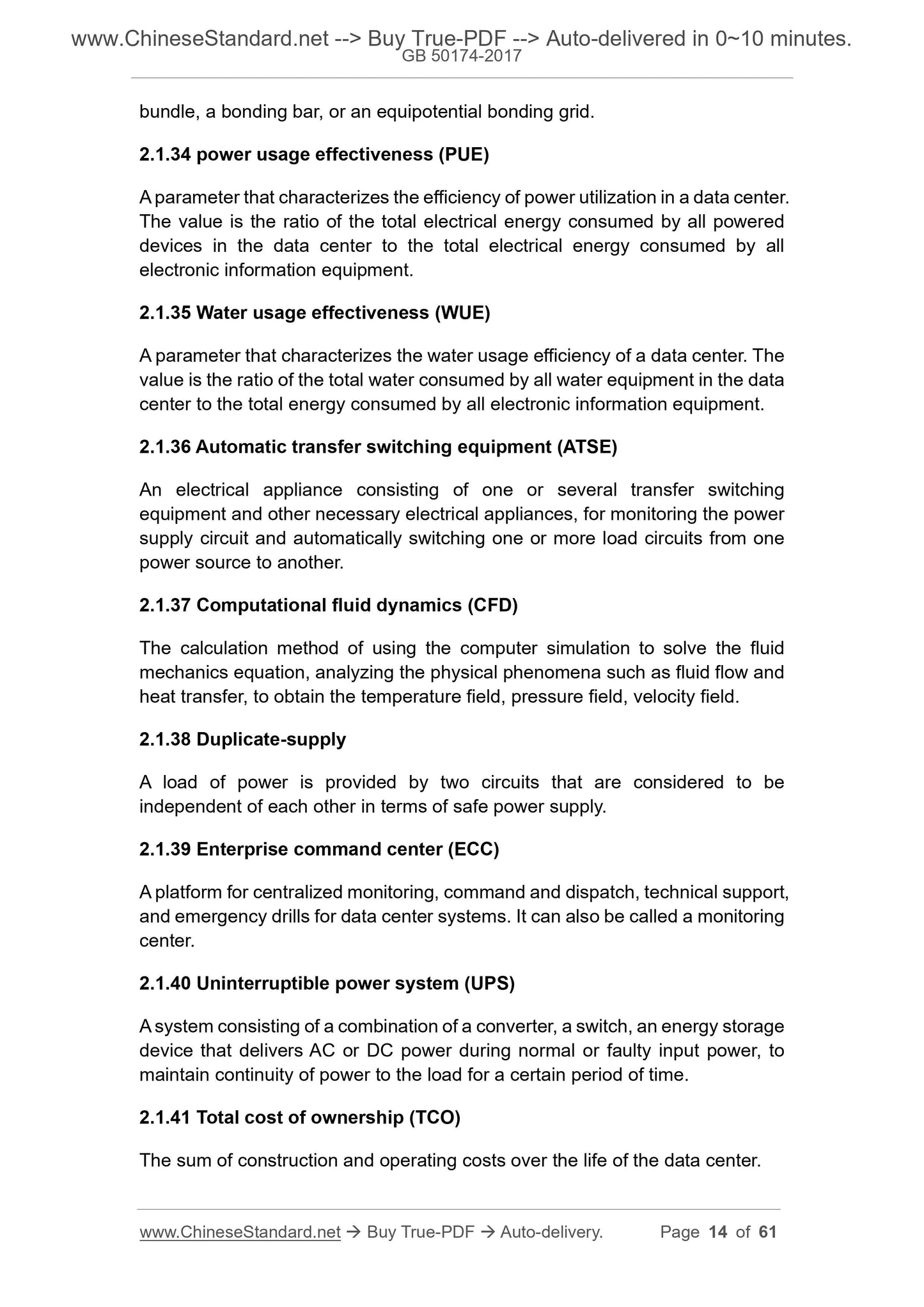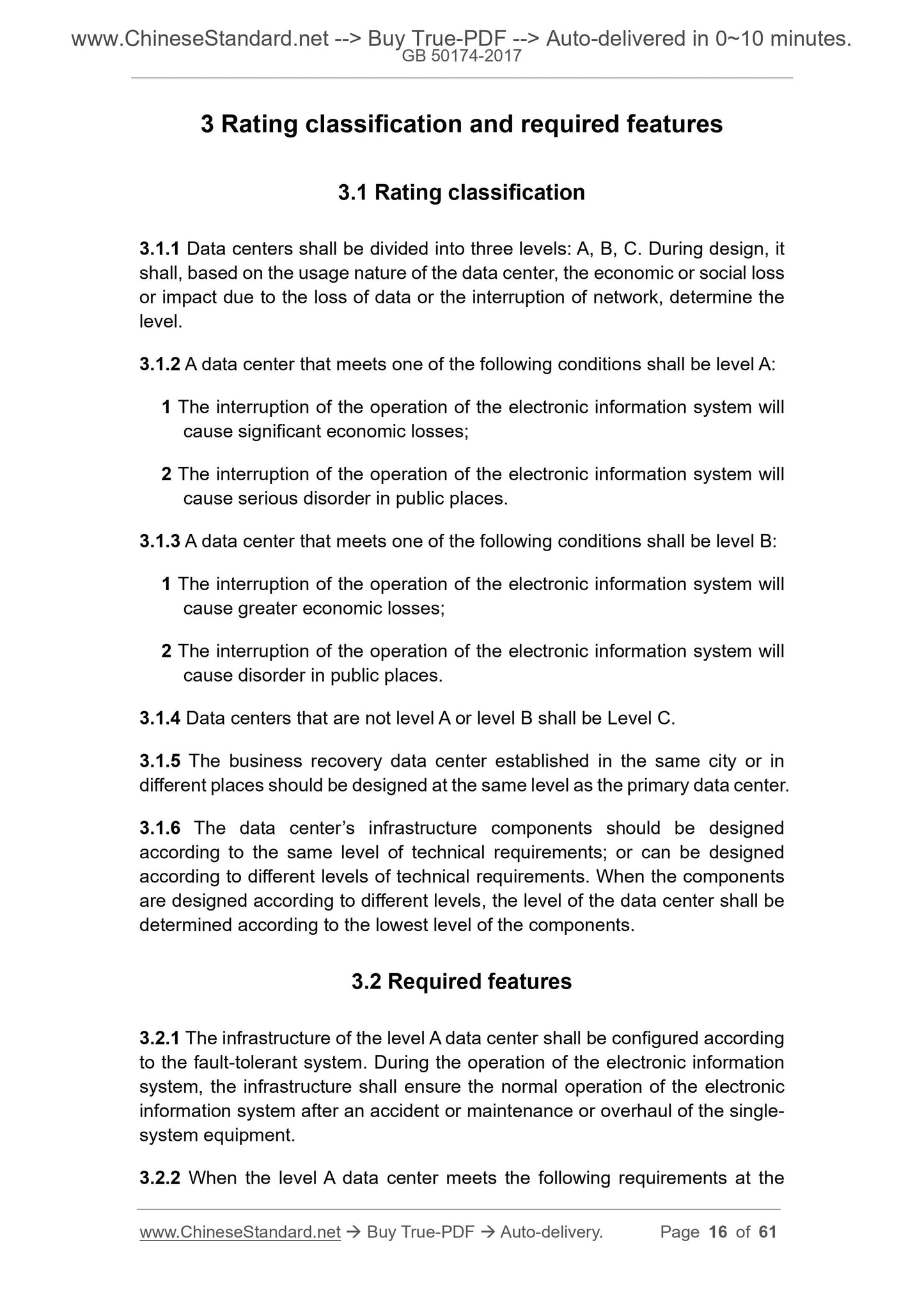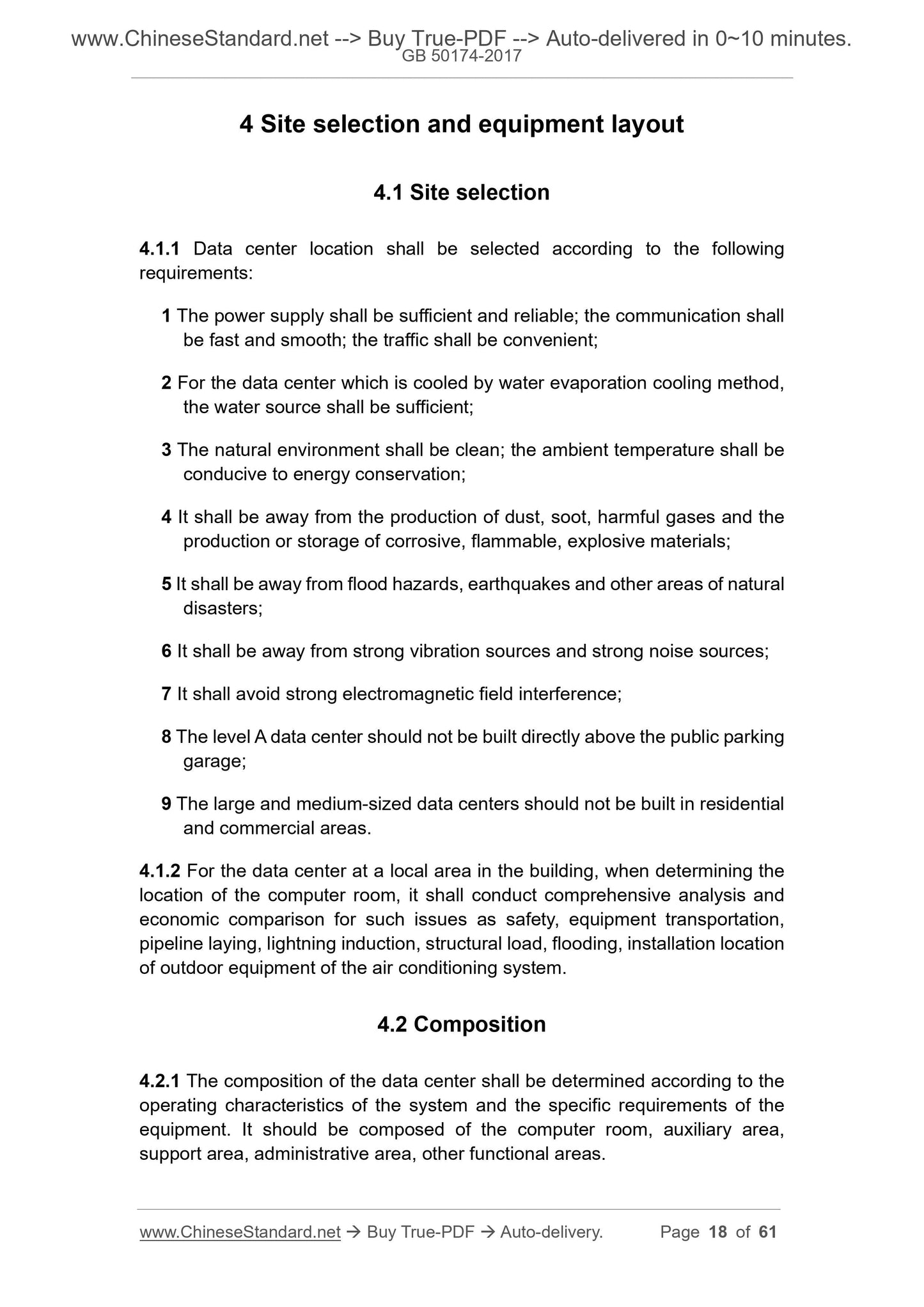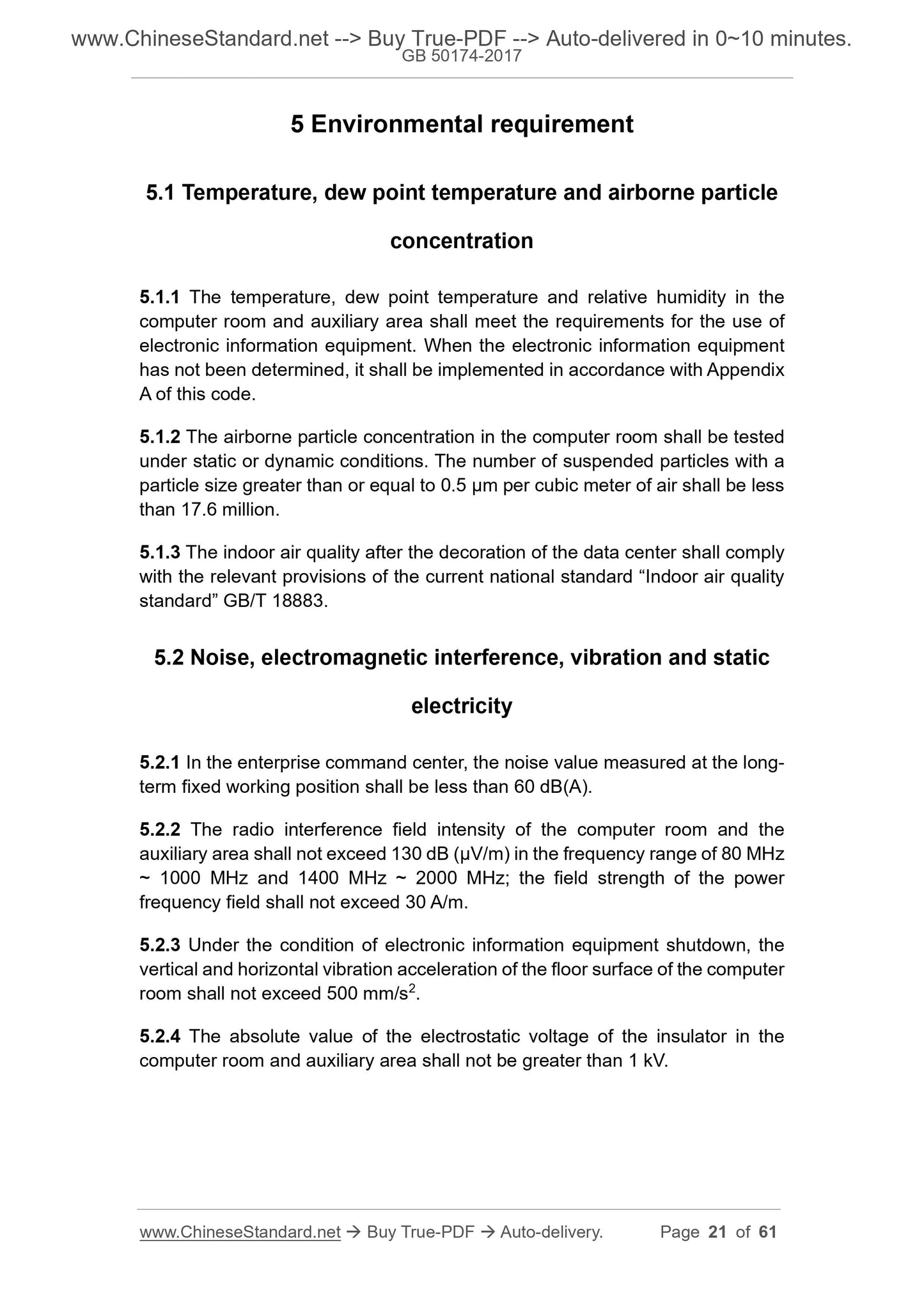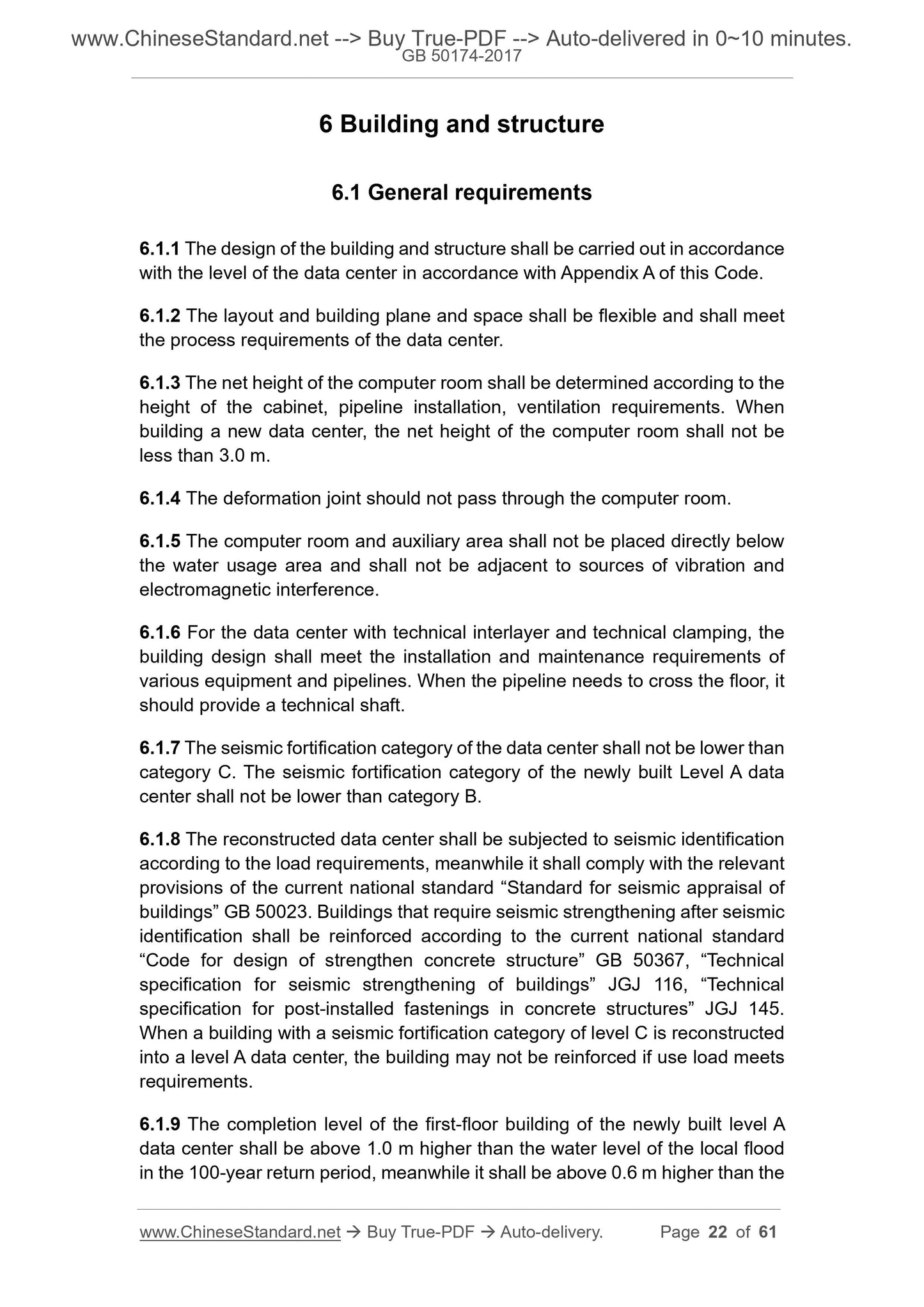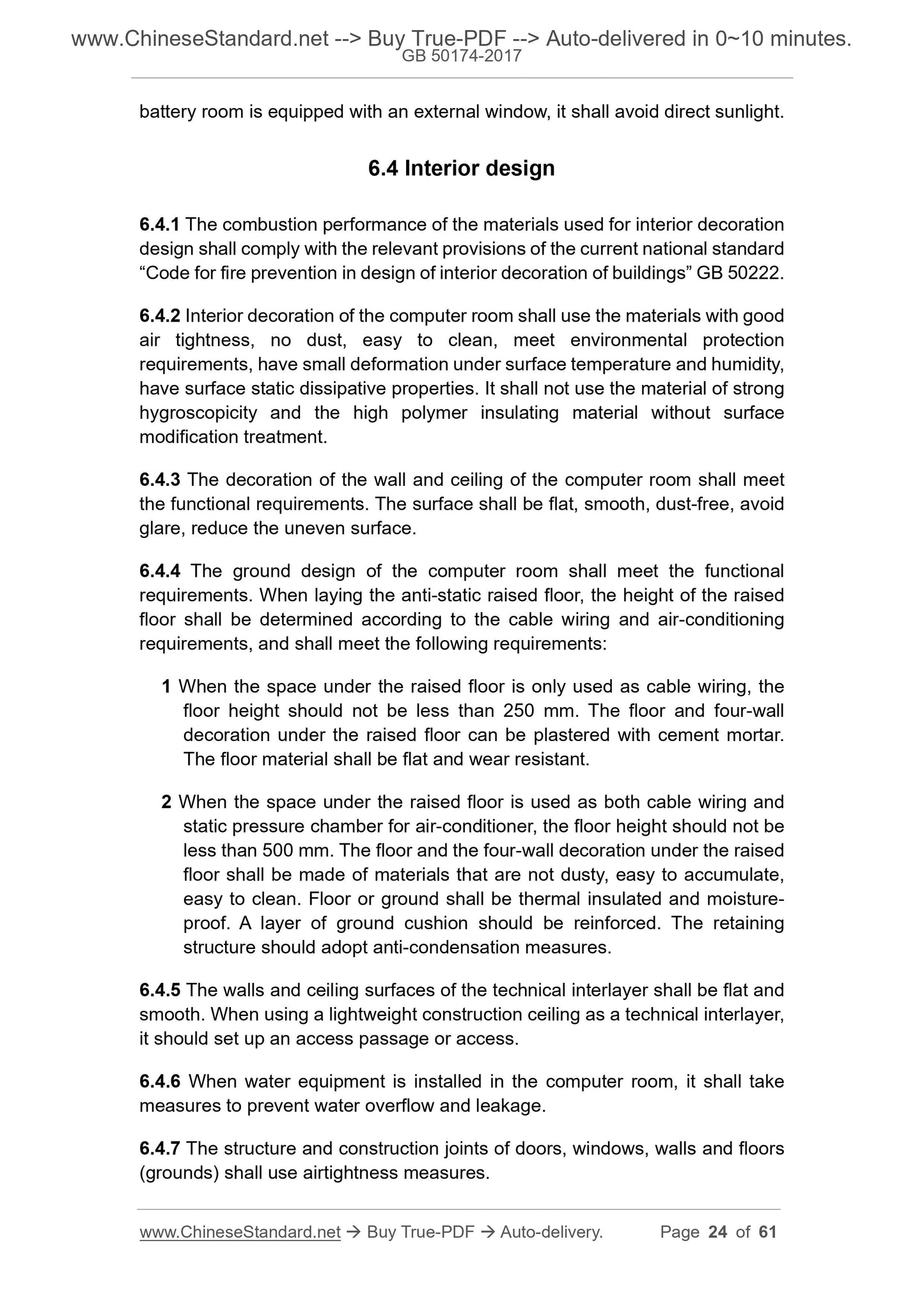1
/
of
12
www.ChineseStandard.us -- Field Test Asia Pte. Ltd.
GB 50174-2017 English PDF
GB 50174-2017 English PDF
Regular price
$555.00
Regular price
Sale price
$555.00
Unit price
/
per
Shipping calculated at checkout.
Couldn't load pickup availability
GB 50174-2017: Code for design of data centers
Delivery: 9 seconds. Download (and Email) true-PDF + Invoice.Get Quotation: Click GB 50174-2017 (Self-service in 1-minute)
Newer / historical versions: GB 50174-2017
Preview True-PDF
Scope
1.0.1 To standardize the design of the data center, ensure that the electronicinformation system operates safely, stably and reliably, make the technology
advanced, economically reasonable, safe and applicable, energy saving and
environmental protection, it hereby formulates this code.
1.0.2 This code applies to the design of newly built, rebuilt, expanded data
centers.
1.0.3 The design of the data center shall follow the principle of coordination
between the recent construction scale and the long-term development plan.
1.0.4 In addition to complying with this code, the design of the data center shall
also comply with the relevant national standards.
Basic Data
| Standard ID | GB 50174-2017 (GB50174-2017) |
| Description (Translated English) | Code for design of data centers |
| Sector / Industry | National Standard |
| Classification of Chinese Standard | P34 |
| Word Count Estimation | 118,126 |
| Date of Issue | 2017-05-04 |
| Date of Implementation | 2018-01-01 |
| Older Standard (superseded by this standard) | GB 50174-2008 |
| Regulation (derived from) | Housing and Urban-Rural Development Bulletin 2017 No. 1541 |
| Issuing agency(ies) | Ministry of Housing and Urban-Rural Development of the People's Republic of China; General Administration of Quality Supervision, Inspection and Quarantine of the People's Republic of China |
Share
